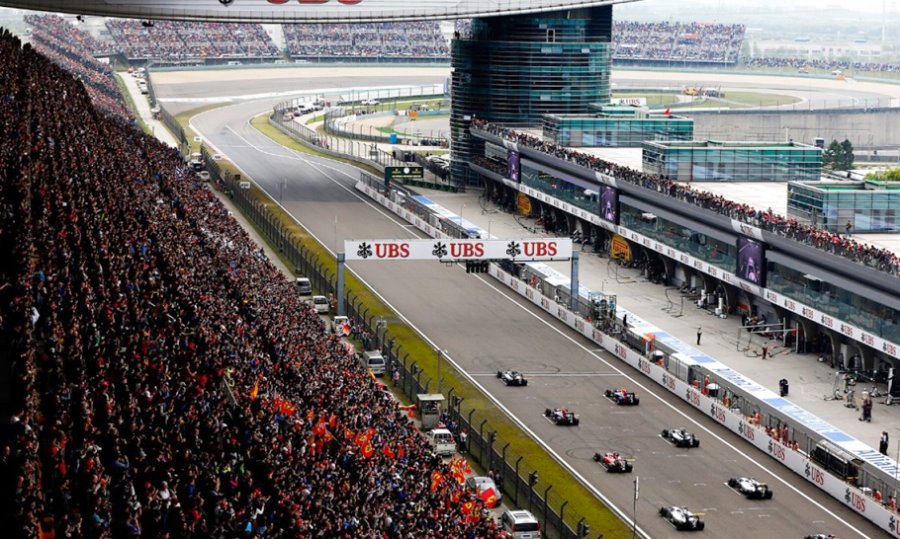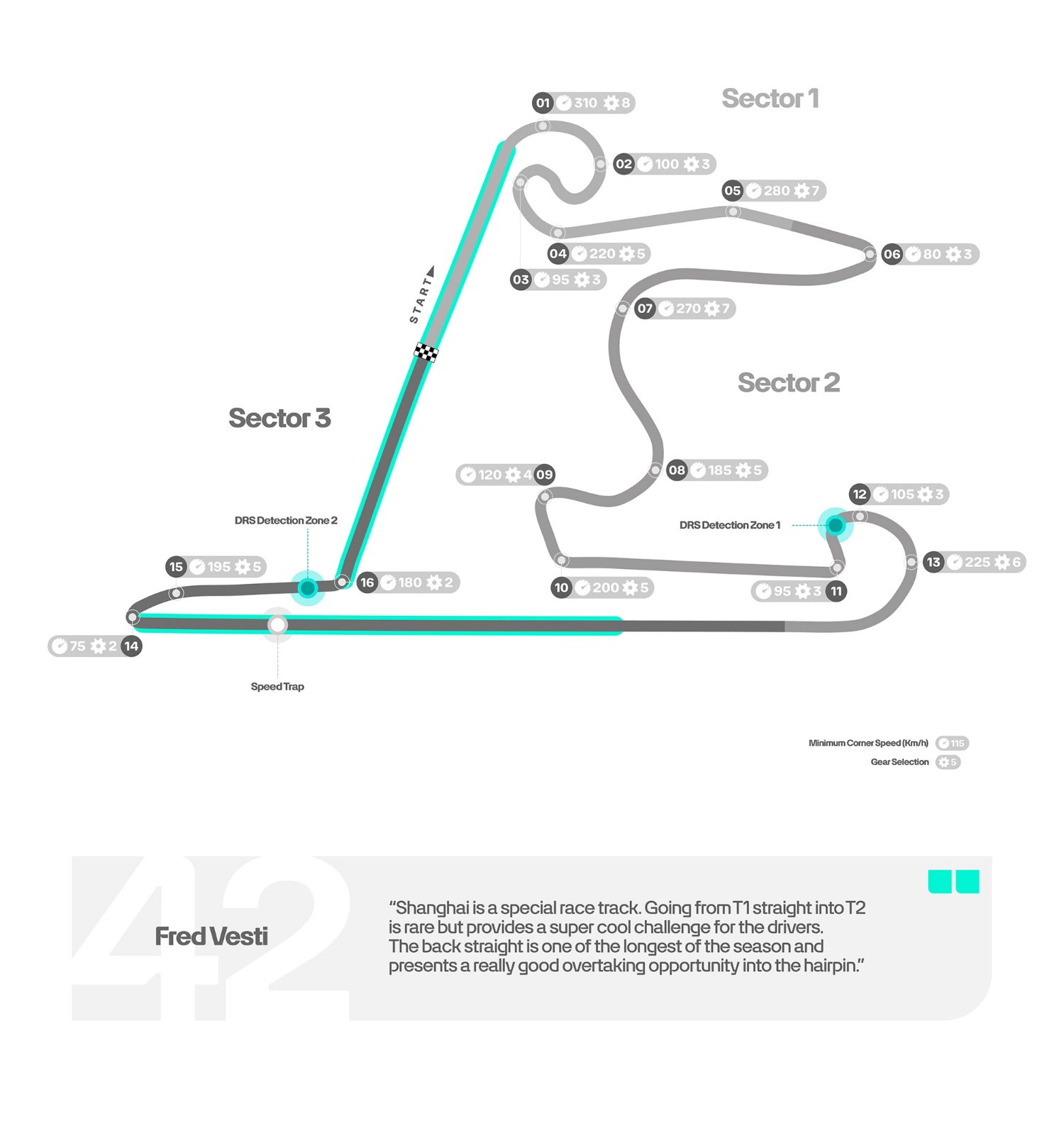Formula 1 News: 2024 Chinese GP Preview
This year marks the 20th anniversary since Formula 1 raced in the Chinese GP by planting its flag in the Jiading district of Shanghai, where a purpose-built circuit was constructed for the championship.
The first edition of this Grand Prix was held in September 2004.
After a five-year absence due to the pandemic and subsequent travel restrictions, Formula 1 is primed to return to Shanghai marking a new chapter in Chinese Grand Prix history.
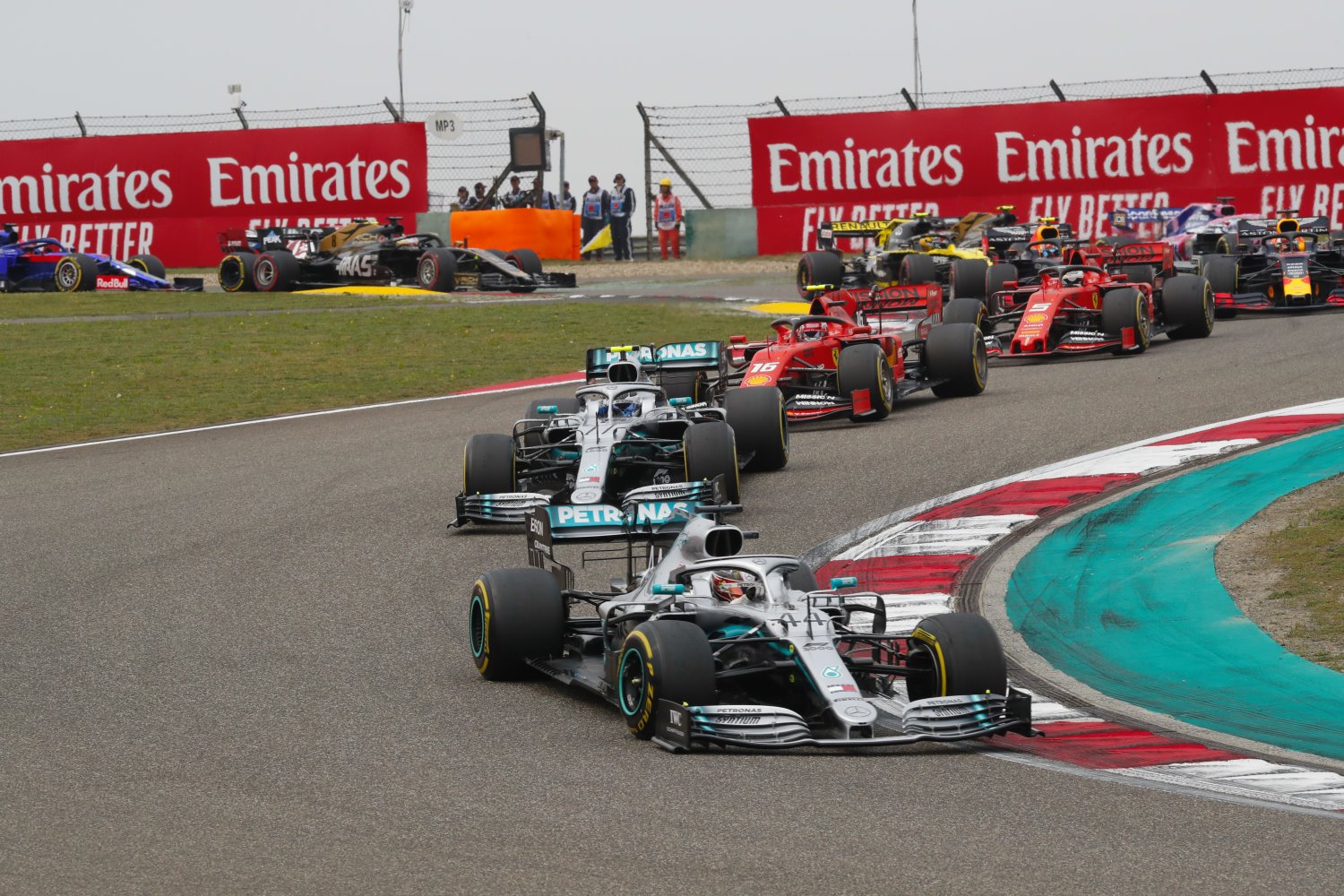
Returning to China is an important moment for the sport. As the world’s largest automotive market and second biggest economy, China is crucial to the sport’s global footprint. The growth of F1 in recent years has been positive and China is a key market in which to continue this progress. With a sell-out crowd expected, we are sure it will be a fantastic event.
It means there will be an air of a refresher course for the paddock, rediscovering the nuances of the Shanghai International Circuit, which is spread out across 5.4km. The circuit, which is prone to ever-changing bumps due to the soft terrain on which it was constructed, has a couple of signature corners, most notably Turn 1.
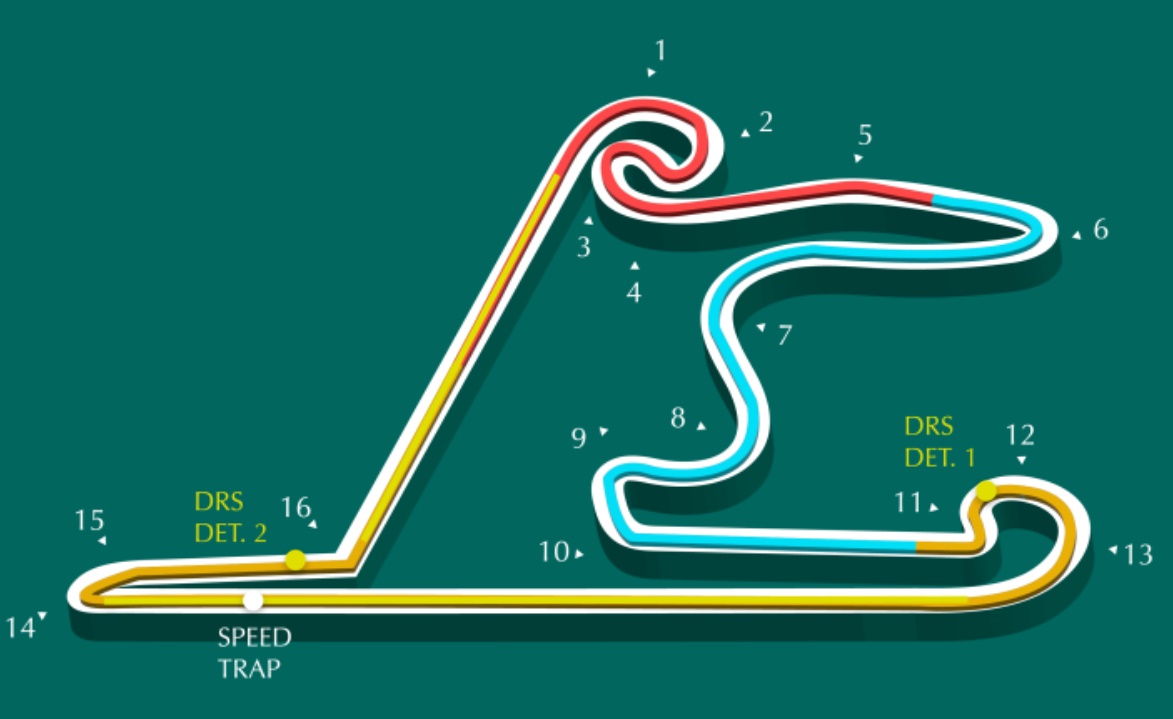
The long-radius right-hander resembles a snail’s shell as it wraps in on itself for 270 degrees before unfurling, while a similar complex – which features banking – catapults drivers onto the lengthy back straight. It’s a circuit which has an abundance of passing opportunities, courtesy of the multiple lines possible, and where drivers have to keep an eye on the front tires due to the energy imbued by the lengthy curves.
The last time F1 raced in China was 2019, so compared to then the teams have a very different cars, and on top of that, it’s going to be a Sprint weekend. Their biggest challenge will be to get the car set up in the right ballpark straight away for FP1. In the only practice session of the weekend, the teams get three sets of tires, so in one hour they’ll probably do three runs and within that time you really need to prepare the car for Sprint Qualifying in the afternoon, so that’s going to be their biggest challenge.
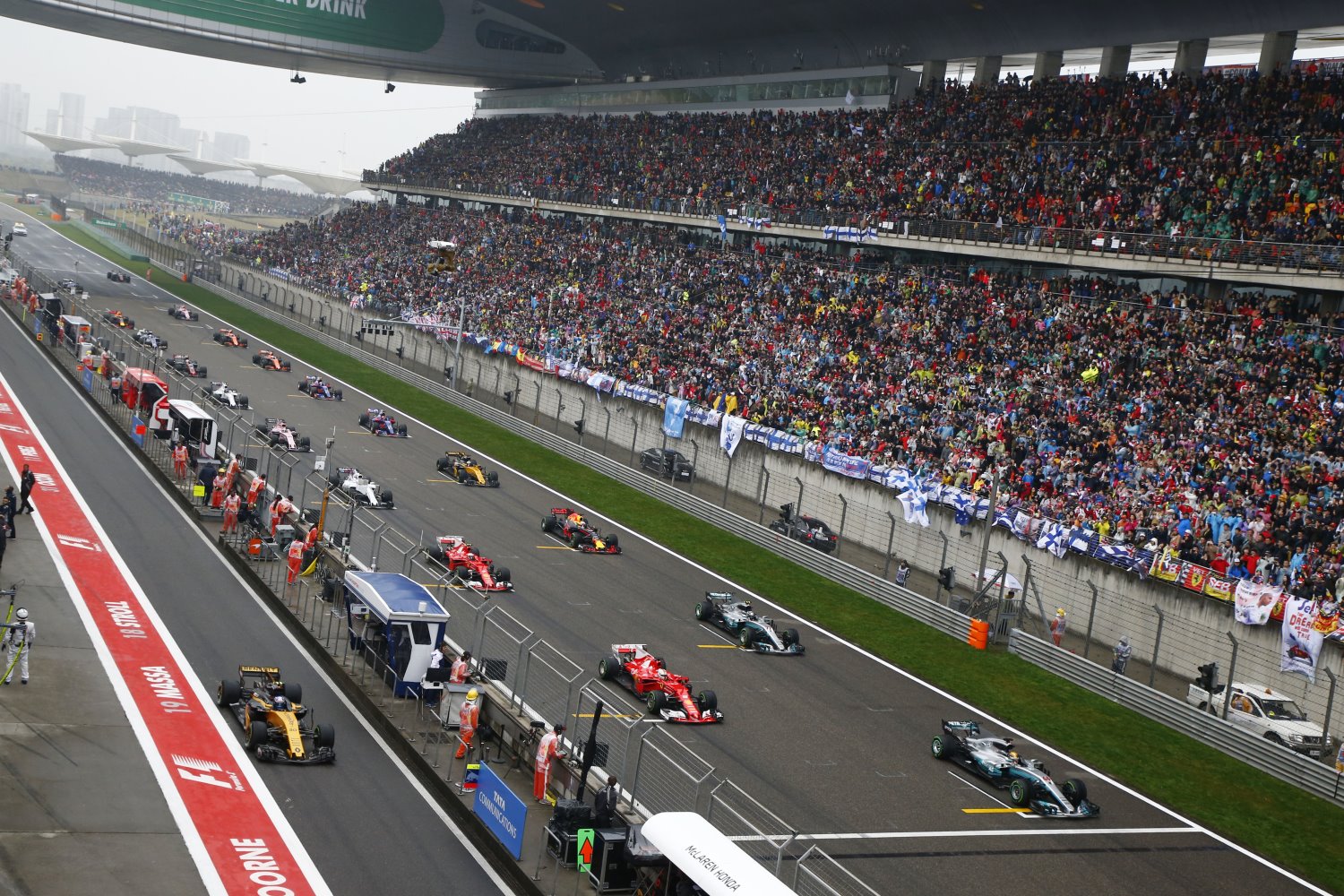
Friday looks to be a bit wet so that’s going to be challenging in FP1 if it is wet; to create a test program to make sure the car is okay for Sunday’s race as well using rain tires instead of dry tires.
Fact File: Chinese Grand Prix
- The Chinese Grand Prix returns to the calendar for the first time since 2019 this year, having first appeared on the F1 calendar in 2004.
- That 2019 race was also F1000, the 1000th race since the inception of the sport in 1950.
- The 5.451km layout features 16 turns (nine right, seven left). The racing lap record from the first race in 2004 still stands today, set by Michael Schumacher.
- In 2005, the circuit hosted the season finale for the one and only time.
- Having originally taken place towards the end of the F1 calendar, the race moved to a more permanent slot in the early stages of the season from 2009.
- The first seven events were all won by different drivers.
- Lewis Hamilton is the most successful driver at the track, triumphing six times to date between 2008 and 2019.
- Shanghai will also host the first F1 Sprint weekend of 2024.
- In a change from 2023, Friday will now consist of FP1 and Sprint qualifying. The F1 Sprint race will follow on Saturday morning, before Grand Prix qualifying on Saturday afternoon.
- This is the first year that ground effect cars (introduced in 2022) will have raced at the Shanghai International Circuit.
- As the circuit is built on swampland, the risk of earth movement below ground is increased, so steps have been taken to grind down and reseal areas of concern on the track to make it less bumpy.
Sprint Weekend Format Change for Chinese GP
F1 Sprint also returns this weekend. What does the team have to contend with this season with the format?
Sprint weekends present a unique challenge because you have to do a lot of learning in the first practice session before going straight into competitive running.
The Sprint regulations have changed this year, with Sprint Shootout now taking place on Friday after Free Practice One, before the Sprint precedes Qualifying on Saturday. From a parc fermé point of view, this season we’re allowed to alter the car setup after the Sprint and before the Qualifying session on Saturday, whereas last year adjustments couldn’t be made for the rest of the weekend after the Shootout.
This means that between Sprint Shootout and Sprint everyone will lean a lot on their simulation tools to see whether they’ve got their understanding of the track and the tires and the setup right. Then there will be a chance to reset before heading into Qualifying if needed, before parc fermé conditions come into force once more.
Weather Forecast
FRI 4/19
High 70°, Occasional morning rain and drizzle (55%); otherwise, mostly cloudy and breezy, Wind SE 14 mph
SAT 4/20
High 72° Cloudy and warm, Wind WNW 12 mph
SUN4/21
High 68° Cloudy Wind NNE 9 mph
Pirelli Tires for Chinese GP
All 16 editions have been run on the Shanghai International Circuit, designed by Hermann Tilke, its outline loosely based on the Chinese “shang” character, meaning “up above.” The 5.451 kilometer-long track boasts 16 corners, many of them very slow, for example the section through turns 1 to 3 and 6 to 14, while others are high speed such as the esses through turns 7 and 8. There are two long straights, both used as a DRS zone, with one on the start-finish straight and the other on the over a kilometer long back straight, from turn 13, which is slightly banked into turn 14.
Based on simulations and past data, the tires are subjected to lateral and longitudinal forces here that fall into the medium category, with the outside of the tire, especially on the left hand side of the car, wearing the most. The trio of tires chosen back in the winter for Shanghai is in the midrange, with the C2 as Hard, the C3 as Medium and the C4 as Soft. Nominally, that’s the same selection as in 2019 but the scenario is very different. Five years ago, the 13 inch tires were still in use, fitted to the previous generation of car, which had a flat floor and completely different aerodynamics to the current car. In fact, for the drivers, the teams and indeed for Pirelli, it’s pretty much a matter of starting from scratch, given that the references are very vague.
Further complicating the situation is the fact that the Chinese Grand Prix is the first of six events this season running to the Sprint format, which itself has been slightly modified for this year in terms of the running order of the sessions. Free practice and Sprint qualifying are on Friday, the Sprint race and qualifying on Saturday, with the Grand Prix, as always, on the Sunday. Parc ferme has also been changed, so that it is now split into two parts: one which covers qualifying and the Sprint race and the other that starts before Saturday afternoon’s qualifying.
That means there is only one hour of free practice on Friday to find the right set-up for the cars and, above all, to evaluate the tires over a long run on a track that will inevitably be in far from optimal condition. It is likely that, in terms of grip, evolution of the track that has not changed since 2019 and has only been used very infrequently since then, will be very significant, as bit by bit the cars rubber-in the surface. This means that work in the simulator takes on even greater importance for the drivers and engineers, both in the run up to the event and during it.
The Sprint format also means a different dry tire allocation, dropping from 13 sets to 12 (two Hard, four Medium and six Soft) while the number of wet weather sets remains the same (five Intermediate and two Extreme Wet). April in Shanghai can see a marked change in temperatures with variations of around 10 °C, which adds another variable to the puzzle that the teams and drivers must piece together. Usually, the Chinese Grand Prix is a two-stop race, partly because there are several places where overtaking is possible, such as braking into turn 14 and then on the main straight and braking into turn 6. Just as it was in Suzuka, the undercut is usually very effective in Shanghai.
Of the 20 drivers that make up the grid this year, just three have stood on the top step of the Shanghai podium: Lewis Hamilton (six times), Fernando Alonso (twice) and Daniel Ricciardo (once). Hamilton also has six Shanghai poles to his name and has scored 204 points here. Of the teams, Mercedes heads the field with six wins ahead of Ferrari with four, while Red Bull has won twice. In fact, it was here in 2009 that Sebastian Vettel gave the maiden victory to the team that, then as now, is run by Christian Horner.
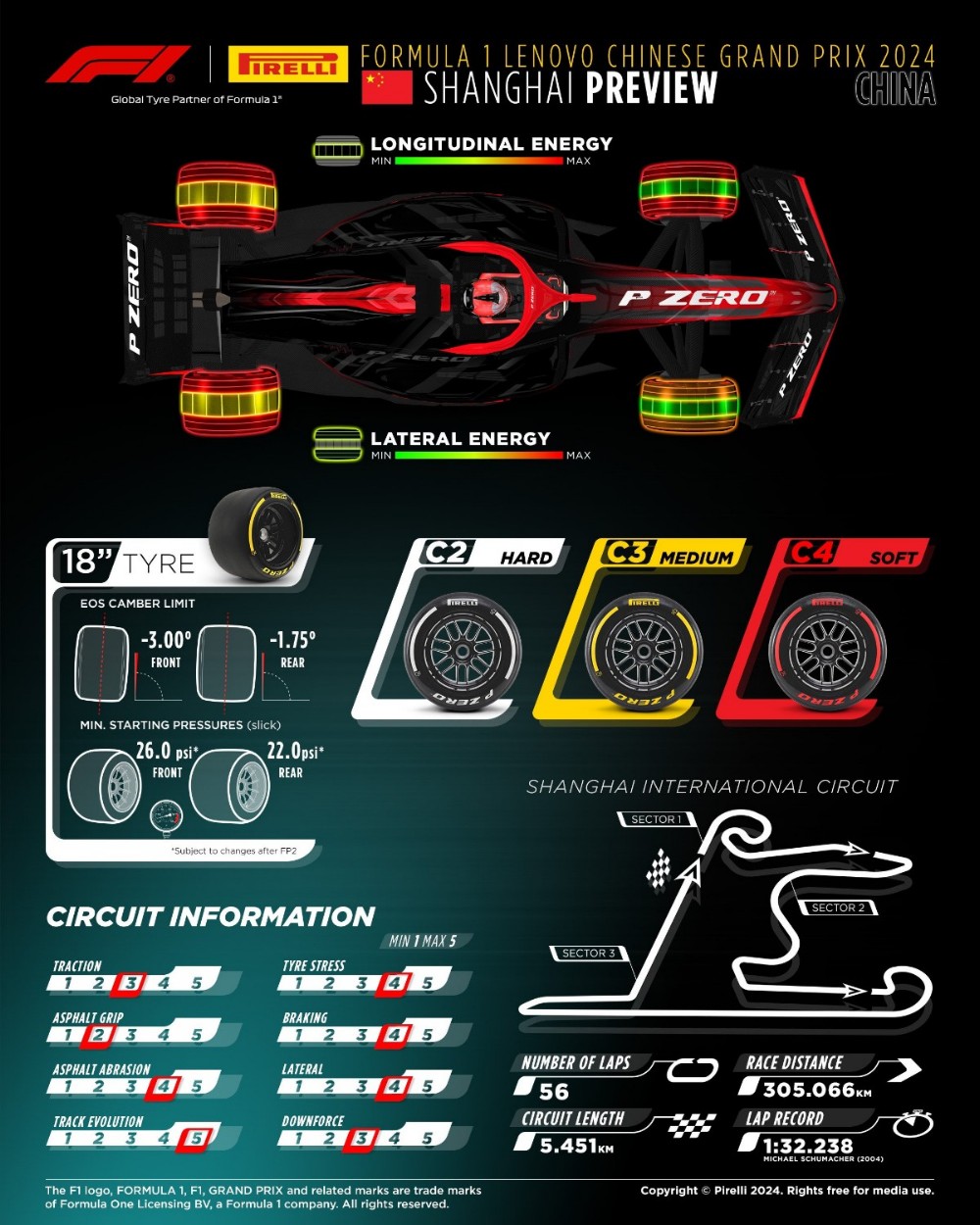
World Champion Max Verstappen’s Take
“It is a great racing track in China and has a unique layout, with trickier corners and the long straights presenting lots of opportunities for overtaking.
It was great to bring home the win in Suzuka and it has been good to spend some more time in Japan with family and friends. We are looking forward to China as it is going to present a challenge ahead of us, especially with it being a Sprint weekend.
“As we have not raced at this track since 2019, and with the one practice session, it will be all about ensuring we have set the car up in the best way we can and managing our tires.
“This added element creates more excitement for the fans, which is good, and the Team has been working hard to prepare. It is a great racing track in China and has a unique layout, with trickier corners and the long straights presenting lots of opportunities for overtaking. I have always loved driving at this circuit so we look forward to seeing what this weekend brings.”
